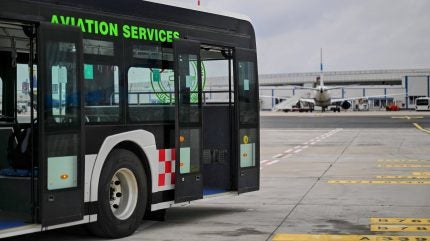
Paulina Gustov is the Marketing Strategist for electric bus supplier DINOBUS.

As passenger numbers soar to pre-pandemic levels, the challenge of how to move millions of people across the tarmac is being raised. Especially for airports seeking a sustainable, efficient solution to quick roundtrips, there is no question that apron buses as that solution are on the rise. And as the market size increases, it is also clear that these electric vehicles are representative of the world’s navigation of potential new energy infrastructure.
Designing for the Tarmac: Inside the Development Process
The initiative of electrifying ground transportation has been driven by net-zero goals. But in many cases, it isn’t as easy as deploying an electric city bus in place of diesel ones. Airside operations require buses to have ultra-spacious capacities, modern safety features, and ergonomic interiors. They need to be able to withstand some of the extreme weather conditions of airport locations. Whether the buses are idling in heat, or warming up in arctic wind, they must be able to efficiently maintain a comfortable temperature using minimal electricity.
Developing quality buses can only be done by listening to those who know ground handling best: airports, operators, bus drivers, and equipment providers. One thing that subverts expectations is the lack of range anxiety. Airport buses are less in need of hundreds of kilometers of range. However, they do need to be reliable, and to charge up in just a few hours. “These apron buses should be shaped by the airports; the client should have the final say in the details,” says Christopher Tabaraki, managing director of the airside bus supplier DINOBUS. The flexibility is important because electric charging stations are still a complicated implementation. Different battery capacities and ranges should be available for each order.
Even then, it takes more than just providing an eco-friendly product to gain the trust of airports. Solid maintenance networks, software integrations, and responsiveness are a must. The right bus fleet for an airport will jumpstart efficiency, safety, and satisfaction in net-zero adaptation. Efficiency in cost, since case studies show a much lower total cost in comparison to diesel units. Satisfaction in the noise-free, emission-free environment for passengers and drivers. Rather than becoming a liability, electric apron buses can be the first domino in totally emission-free ground support equipment.
The Road Ahead for Sustainable Ground Handling
With increasingly impressive battery technology and leveling prices, electric buses will be the green option, and simultaneously the cheapest one. Many airports around the world are planning to fully electrify fleets within the next five to ten years, so we actually see the transition from demos to adoption happening faster than expected. They tend to be skipping the hybrid stage and going straight to battery electric, as part of more expansive transformations. Amsterdam’s Schiphol Airport is leading the way with over fifty electric units, and more are following suit. It’s increasingly clear that the time to integrate electricity is now, for both manufacturers and airports.



